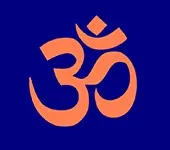This audio gives you a crystal clear explanation of what Tanmatra means.

English
Mantra Shastra
Click on any topic to open
- 40 Significance of the count - 108 in Mantra Japa
- 39 Unlocking Higher Consciousness through Japa
- 38 The Role of Japa in Elevating Inner Purity and Spiritual Energy
- 37 The Science Behind How Listening to Mantras Works
- 36 Mastering the Art of Japa: A Comprehensive Guide to Chanting
- 35 Why There Are Different Mantras For The Same Devata
- 34 Is Idol Worship Only For Beginners?
- 33 The Symbolism Of Madhu Kaitabha Story
- 32 Agneyastra
- 31 What is a beeja mantra?
- 30 How Mantras Have Got The Power To Manifest
- 29 Mantras Are Targeted Vibrations
- 28 What exactly is Tanmatra?
- 27 What are the qualities of a Guru?
- 26 Awareness levels of vibrations
- 25 Characteristics of Sanskrit alphabets as per Mantra shastra
- 24 Sound waves can make inanimate objects behave like living organisms
- 23 Importance of Hreem- the shakti beejakshara
- 22 Primal energies were used to create the world and they can be influenced using mantras
- 21 Mantras can bring presence of devatas
- 20 How does smoke from yajna cause formation of rain clouds?
- 19 What all information do you require before starting sadhana of any mantra
- 18 Is it possible to ignite something using mantras?
- 17 How to get Mantra siddhi
- 16 Five kinds of sound
- 15 The ten kinds of Mantra prayoga or application of Mantras
- 14 Agni has seven tongues- Do you know about them?
- 13 What is the difference between a prayer and a mantra?
- 12 Can you find peace-tranquility and stillness?
- 11 What exactly is Shabda brahma?
- 10 If spiritual knowledge is complete knowledge then it has to include scientific knowledge as well
- 9 What you should and should not sit upon while chanting mantras
- 8 Mantra sadhana is not all that difficult
- 7 If you consider your Guru as a human being then your sadhana is gone
- 6 About how important are swaras while chanting Veda mantras
- 5 Every Sanskrit Alphabet Represents So Many Things
- 4 There Are Three Kinds of Puja
- 3 What if you are not able to find a Guru for Mantra sadhana?
- 2 The Critical Role of Pronunciation in Mantra Effectiveness
- 1 Mantras Will Work Only If Their Ten Samskaras Are Performed
7
30
Astrology
Atharva Sheersha
Bhagavad Gita
Bhagavatam
Bharat Matha
Devi
Devi Mahatmyam
Ganapathy
Glory of Venkatesha
Hanuman
Kathopanishad
Mahabharatam
Mantra Shastra
Mystique
Practical Wisdom
Purana Stories
Radhe Radhe
Ramayana
Rare Topics
Rituals
Rudram Explained
Sages and Saints
Shiva
Spiritual books
Sri Suktam
Story of Sri Yantra
Temples
Vedas
Vishnu Sahasranama
Yoga Vasishta
26
17
Copyright © 2025 | Vedadhara | All Rights Reserved. | Designed & Developed by Claps and Whistles